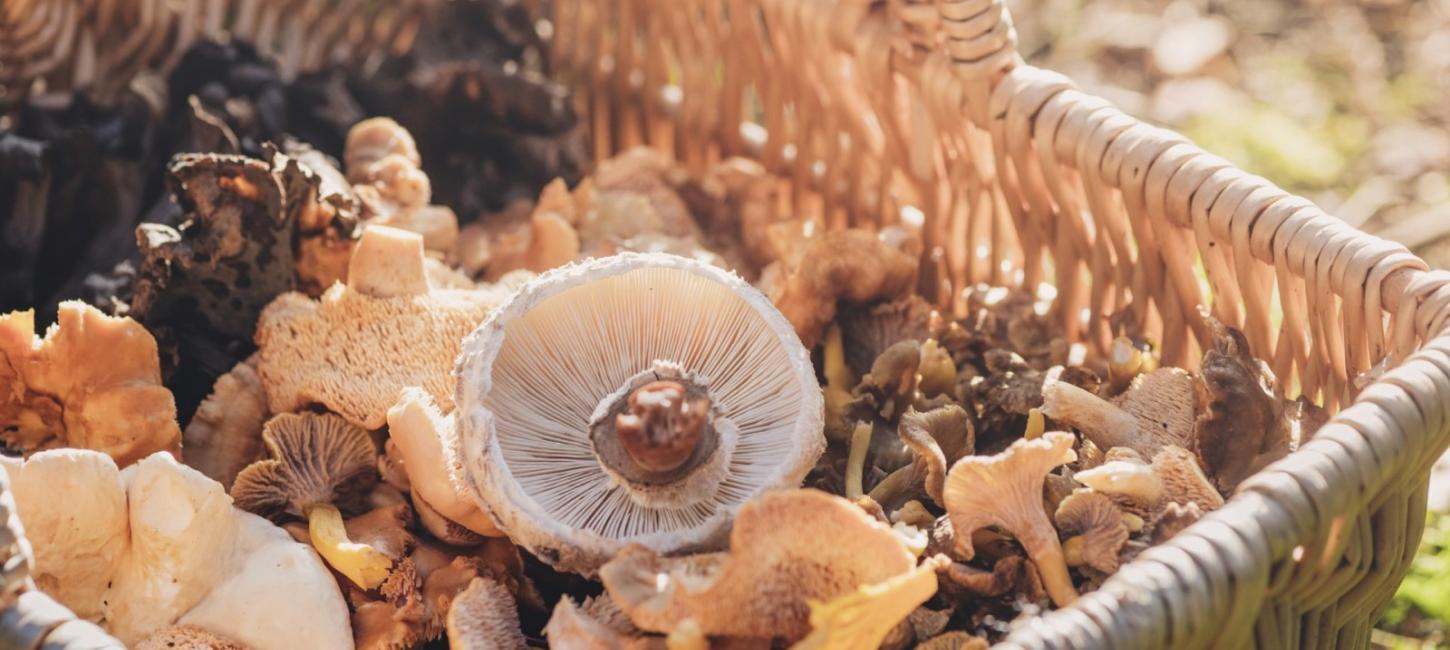
Mushroom foraging in North Jutland
Scavenging for mushrooms in the North Jutland forests. Here, plenty of delicious surprises and experiences await in the beautiful autumn woods.
Going mushroom foraging is a delightful activity for the whole family or as a cozy day out with friends. You can experience nature up close while getting both exercise and fresh air. Edible mushrooms are highly sought after at a time when many want to use local ingredients and cook from scratch. And Northeast Jutland is teeming with perfect mushroom spots, just as the region also offers organized trips throughout the entire autumn. If it's your first mushroom foray, or if you're unsure about which mushrooms are edible, we recommend joining one of the guided tours. Here, you'll experience the authentic hunt for mushrooms, hear local stories, and in a safe and enjoyable way, try your hand at nature's delicacies. So grab your foraging basket and head out to discover the many colors and flavors of autumn.
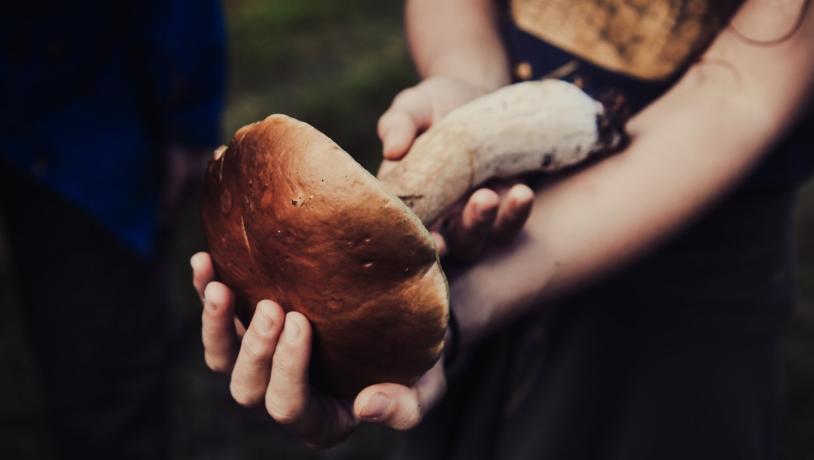
Photo:Freya McOmish, Scandinavia Standard
Where to Find Mushrooms?
Mushrooms, especially the edible ones, are found in the forest, where they thrive best. In privately owned forests, you're not allowed to go off roads and trails, where the best mushroom spots are often found. Therefore, it's best to use state-owned forests for mushroom picking, where this is permitted.
The best forests for mushroom picking in North Jutland:
Here, seasoned mushroom gatherers often go on mushroom picking trips:
When can I find mushrooms?
In principle, you can go mushroom picking all year round, but it's best in the autumn; especially if the late summer has been warm and moist. Mushrooms require plenty of water, so if it rains a lot in late summer, it's also considered a good mushroom year.
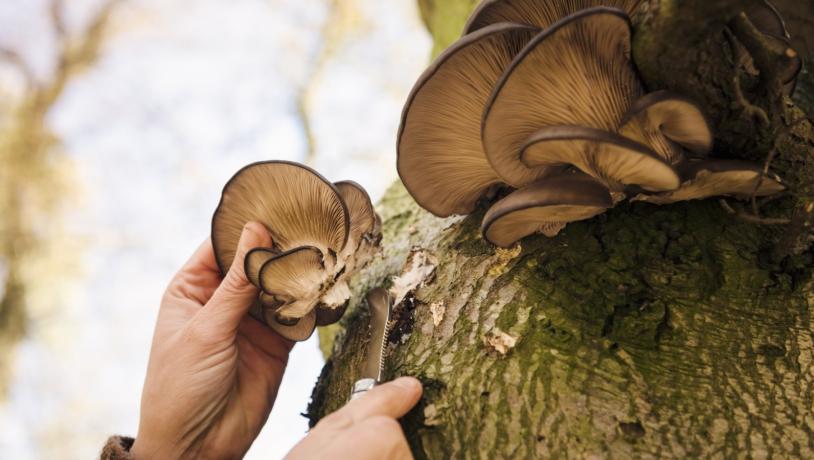
Photo:Richard Clark
Mushroom Picking - Guide to Danish Mushrooms
Mushroom picking isn't just a cozy and healthy activity with family or friends. It also provides an opportunity to bring the great experience all the way home to the kitchen, where you can continue the coziness with a delicious homemade mushroom risotto or just a slice of toasted bread with chanterelles, porcini, or button mushrooms.
But before you go hunting for mushrooms for your risotto, it's a good idea to prepare. That's why we've created this guide.
What Should I Bring on the Mushroom Picking Trip?
The experience gets better if you have the right equipment. A good mushroom picking kit consists of:
- Mushroom identification book: Use it in your preparation and bring it into the forest to identify mushroom species along the way.
- Map of the area: Mark the good mushroom spots so you can return the following year. Over time, you can create an atlas of your "secret" mushroom spots.
- Mushroom knife: A small sharp knife to cut away the dirty parts of the mushroom.
- Mushroom basket: A plastic bag is not suitable for mushrooms as they will easily rot. Instead, carry your chanterelles and porcini mushrooms home in a cozy basket.
- Brush: Bring a small brush to clean and remove dirt from the mushrooms.
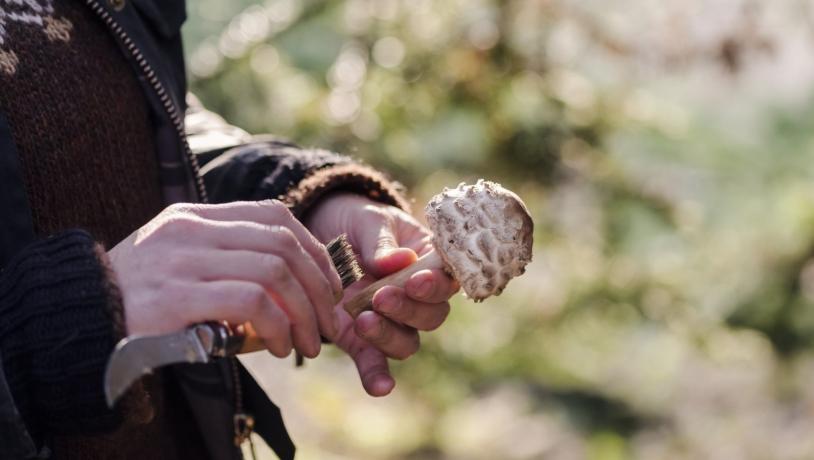
Photo:Richard Clark
Edible Mushrooms in Denmark
Before you go mushroom picking and start putting mushrooms in your basket and risotto, it's a good idea to know which Danish mushrooms are edible and which ones to avoid. There are around 3,000 different mushroom species in Denmark, and it can be difficult - even for experienced mushroom connoisseurs - to identify mushrooms to species level. Therefore, it's a really good idea to bring a mushroom identification book. If it's your first time going, it may also be a good idea to go on a guided mushroom picking tour. There are various providers, so there should be an opportunity to find a tour that takes place close to you:
Some mushroom species are poisonous; a few are even deadly. So it's very important that you're vigilant and follow the Danish Food Administration's 5 rules about mushrooms:
- Only eat mushrooms you know 100%.
- Only eat recognized edible mushrooms.
- Use only fresh mushrooms for cooking and immediately cool any leftovers.
- Always start with a small portion of a new edible mushroom - this way, any sensitivity can manifest in a less painful way.
- Do not eat wild mushrooms raw, as many wild mushrooms can cause discomfort if eaten raw.
Best Edible Mushrooms
To help you on your way, here are the top three edible mushrooms that are also difficult to confuse with poisonous ones:
- Porcini Mushroom (Boletus edulis)
Porcini mushrooms are possibly the best edible mushrooms you can find. You'll mainly find them under beech and spruce trees, typically from August to October.
Read more about Porcini mushrooms here.
- Chanterelle Mushroom (Cantharellus cibarius)
Chanterelle mushrooms are found throughout Denmark, usually under deciduous and coniferous trees. They emerge around July, appear abundantly in August, and can be found until November.
Read more about Chanterelle mushrooms here.
- Horn of Plenty (Craterellus cornucopioides)
The Horn of Plenty mushroom, like the Chanterelle, is typically found in deciduous and coniferous forests, often in moist mossy soil. The mushroom appears in August/September and disappears with frost.
Read more about the Horn of Plenty here.
Other good edible mushrooms include:
- Wood Blewit (Lepista nuda)
- Field Mushroom (Agaricus campestris)
REMEMBER, there are also many poisonous mushrooms - so never eat mushrooms you're not familiar with.
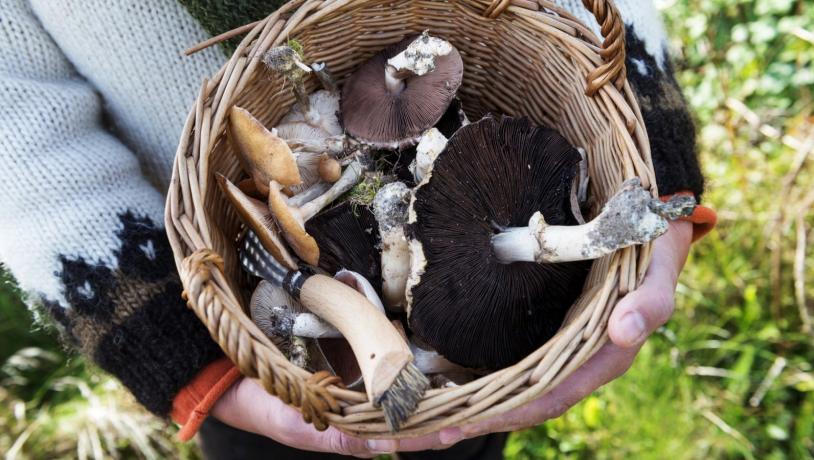
Photo:Richard Clark